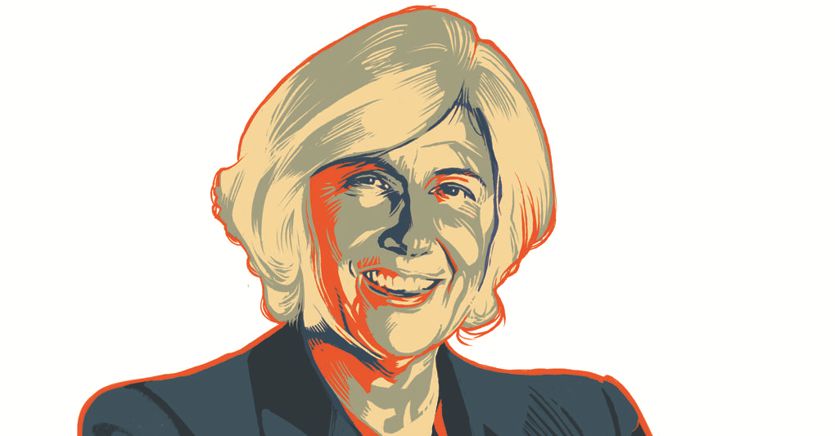The coffee bistro it is precisely on the ground floor of the historic building that Mario Cucinella was responsible for the renovation and transformation into a museum. And it overlooks the garden designed by Marilena Baggio, not surprisingly a specialist in wellness architecture and green spaces with a therapeutic figure. The garden is conceived as an open space, of free access for all Milanese, not only for visitors to the museum or for the collaborators of the foundation: “I don’t want to seem abstract or rhetorical, but there is a need to open and make public goods , public goods the Americans and the British would say, places in cities that were previously closed and the prerogative of a few. Milan suffers from growing inequalities. She is often disoriented. And its ruling class must rethink. Many friends were amazed, and perhaps resentful, when I did not, as the Ambrosian rites would have liked, the inauguration of the Etruscan museum and the limited number and invitation-only foundation. I just opened. It seemed right to me. On the day of the opening, whoever wanted to came “, he says with critical detachment and psychological autonomy towards theelite Milanese of old money e you new money a lady of the Lombard bourgeoisie who, from Monza with an apartment in front of the Monza Park (“for me the most beautiful garden in Europe”), has a solid root in Brianza – one of the most international places in Italy – and which belongs to a family of entrepreneurs and investors who have made their fortune above all on international markets (even now Fidim, the holding of family holdings, has a net asset value of one and a half billion euros).
The main dish is served on the table. Giovanna took a Nicoise salad. I, on the other hand, a dish of spaghetti with tomato sauce, one of Aprea’s classics that has always been defined as “a cook, before one chef“. No wine, it’s noon.
For Giovanna Forlanelli Milan is not the center of everything. In this, it is dissimilar from the Milanese bourgeoisie – professional and entrepreneurial, cultural and political – for which every good thing is basically reachable by subway. For her, rather, Milan is a point of transition – important, indeed fundamental, but not unique – between her own identity and the world. For Giovanna, identity matters: «My father Angelo, from Monza, was a construction worker. My mother Child’s family was of furniture artisans and lived in Seregno. She had a great entrepreneurial spirit. With her sisters Amelia and Pinuccia she opened four pastry shops in Monza, Meda, Seregno and Cabiate. As a girl, I spent Saturday afternoons and Sunday mornings filling cream puffs and cannoncini. Today my dad is 92, my mom is 90, and they still live in Monza ».
Before graduating in medicine at the University of Milan, she studied at the Frisi scientific high school in Monza. And, at the age of sixteen and a half, she met her future husband on a study holiday in England, who would also have studied medicine, with whom he had his daughter Lucrezia, also a graduate in medicine, according to a family line inaugurated by Luigi, the founder of the company who, son of peasants, graduated in medicine at the University of Pavia: «My father-in-law had a very strong personality. I have always called him her in the company and in private. He was a man from the fifties. But he had a sense of things. He smiled when I reminded him that he once said he would never put a woman in charge of a commercial network and, the following year, he had given an executive responsibility for Germany. “
Andrea Aprea’s small pastry arrives on the table, which naturally has a Neapolitan intonation like its author, with babà and tiny sfogliatelle. Giovanna explains the analysis made before deciding what to do here and which profile to assign to the foundation-museum combination, in the delicate relationship with the philanthropy of the big international bourgeoisie: «Contemporary art is more widespread. Ancient art is rarer. I really like how the Gulbenkian of Lisbon, created in 1956 by the Armenian businessman Calouste Gulbenkian, and the Berggruen Institute of Los Angeles of the billionaire Nicolas Berggruen, which last year opened its European headquarters in Venice at the Casa dei Tre Oci, operate. “.
